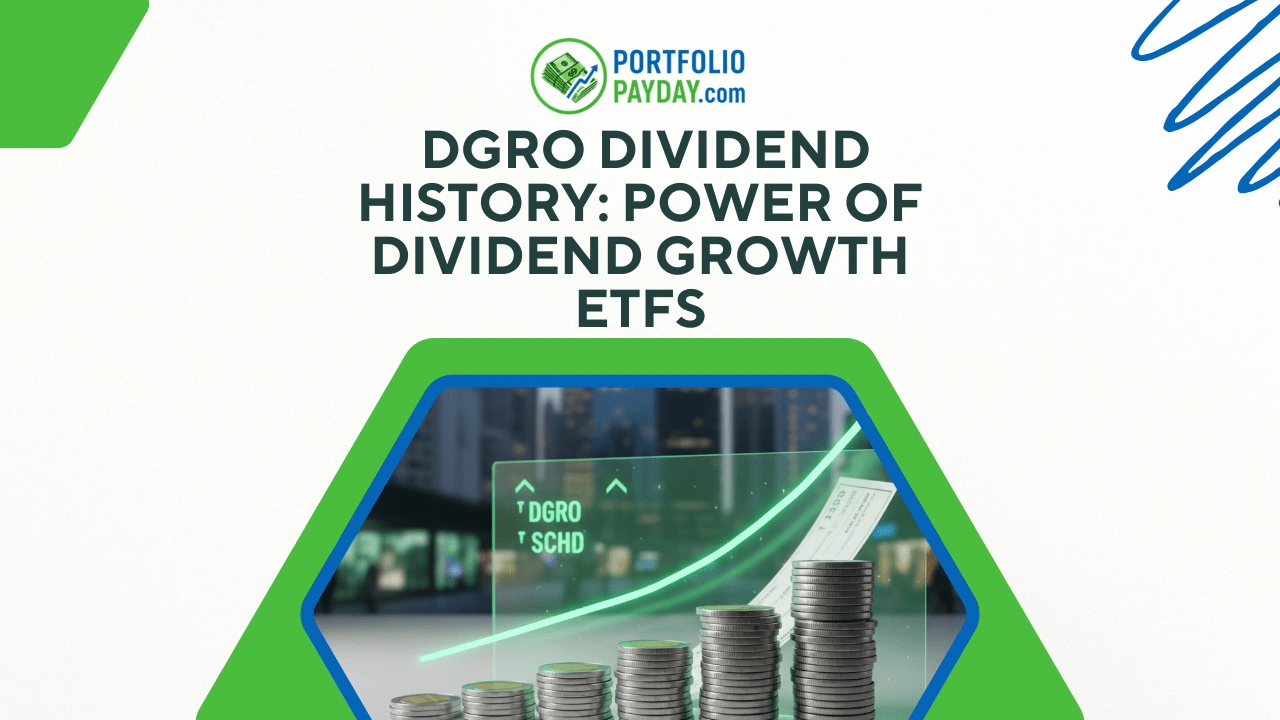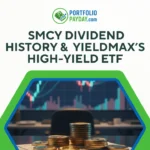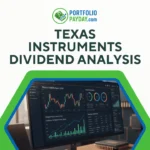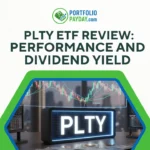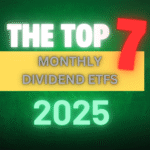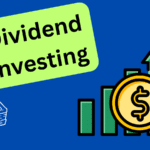Disclaimer: The following is for informational purposes only and not financial advice. Always do your own due diligence. I am not a licensed advisor.
DGRO Dividend History: A Deep Dive into Dividend Growth Investing
Dividend investing is a strategy that many long-term investors swear by, and it’s easy to see why. By holding stocks that pay dividends, investors can receive a steady stream of income that can be reinvested to grow their wealth further. Among the numerous dividend ETFs, the iShares Core Dividend Growth ETF (DGRO) stands out for its commitment to consistent dividend growth over time. But how does DGRO perform compared to other dividend-focused ETFs, like SCHD? Let’s take a closer look at its history, performance, and distinctive characteristics.
What is DGRO?
DGRO, short for iShares Core Dividend Growth ETF, is designed for investors looking to tap into a diversified set of U.S. companies that consistently grow their dividends. Unlike other ETFs that prioritize high dividend yields, DGRO focuses on companies with a proven history of increasing their dividends year after year. As of 2025, DGRO holds over 400 companies, including some of the most reliable dividend payers, such as Microsoft, Apple, and JPMorgan Chase.
The ETF tracks the Morningstar US Dividend Growth Index, which includes only companies that have raised their dividends for at least five consecutive years. This makes DGRO a solid option for investors who want to see their income grow over time rather than relying on a high-yield payout. This long-term approach to dividend growth is ideal for those who believe in the power of compounding.
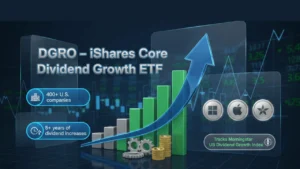
DGRO’s Dividend History
DGRO’s appeal lies in its steady dividend growth rather than chasing high yields. The dividend yield on DGRO currently hovers around 2.4%, which may not sound high compared to other dividend ETFs like SCHD, but its strength is in growth. The ETF’s average annual dividend growth rate has been consistently strong, with a 5-year growth rate of 10-12% per year. This means that while your initial yield may be modest, the income generated by your investment can increase significantly over time.
One key advantage of DGRO is its focus on dividend growth rather than just the yield. While many investors might be attracted to high-yield ETFs, DGRO offers the promise of a steadily increasing income stream. The dividends paid by DGRO have been growing year after year, making it a powerful tool for building wealth over the long term.
Performance Over Time
DGRO’s historical performance is impressive. As of late 2024, the ETF had delivered a 1-year return of 19%, which is a solid performance considering the market conditions. When looking at the 3-year, 5-year, and 10-year periods, DGRO continues to show reliable returns, outperforming the average market index in many cases.
In terms of risk, DGRO is relatively stable compared to other growth-focused ETFs. With a beta of 0.81, the ETF is less volatile than the broader market, which makes it a safer bet for conservative investors. This stability, combined with its steady dividend growth, gives DGRO an edge over other high-growth, high-volatility ETFs.
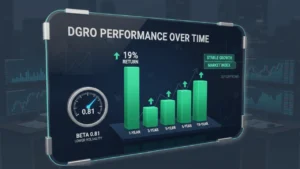
DGRO vs. SCHD: A Head-to-Head Comparison
Both DGRO and SCHD are popular choices among dividend investors, but they cater to slightly different investment strategies.
- Dividend Yield: SCHD offers a higher dividend yield (around 3.89%) compared to DGRO’s 2.4%. However, SCHD’s yield comes with less growth potential, as its dividend growth rate over the past 5 years has been relatively lower than DGRO’s. DGRO, on the other hand, has a strong 5-year growth rate of around 10-12%, making it ideal for those looking for rising income over time.
- Diversification: DGRO is more diversified than SCHD, with over 400 holdings compared to SCHD’s 100 holdings. This broader diversification helps reduce the risk of exposure to a single sector or company. However, SCHD’s more concentrated portfolio can offer higher yields but with increased risk.
- Expense Ratio: DGRO’s expense ratio is slightly higher than SCHD’s (0.08% vs. 0.06%), but this difference is minimal and still lower than most dividend ETFs on the market. Both ETFs offer low-cost exposure to high-quality dividend-paying companies, which is a major advantage for long-term investors.
- Growth Potential: DGRO’s focus on companies with a history of dividend growth makes it a better choice for investors looking for both income and capital appreciation. SCHD, while a solid performer, may not offer the same level of dividend growth as DGRO, especially when it comes to tech stocks and emerging dividend payers.
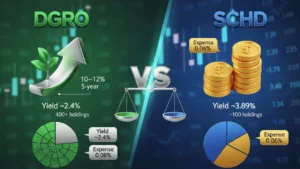
Why DGRO is a Solid Choice for Long-Term Investors
DGRO’s strategy of focusing on dividend growth, rather than just high-yield payouts, makes it a great option for those looking to build wealth over the long term. The ETF’s low expense ratio, combined with its focus on companies that have a proven track record of increasing dividends, provides a reliable and predictable investment for conservative investors.
Furthermore, the power of reinvesting dividends (via a DRIP strategy) can exponentially increase the value of an initial investment. For example, a $100,000 investment in DGRO, reinvested over 10 years, could result in an income that is nearly double the original dividend payout.
Conclusion: Is DGRO Right for You?
DGRO is an excellent choice for long-term investors who prioritize dividend growth over high initial yield. With its steady performance, low volatility, and emphasis on companies that consistently raise their dividends, DGRO offers a unique opportunity to generate rising income over time. While it may not have the highest dividend yield, the long-term growth potential makes it a solid addition to a diversified portfolio.
For those looking to balance their portfolios with both income and growth, DGRO offers the best of both worlds. It’s an ETF that’s built for the future of dividend investing, focusing on companies that are adapting to new market trends while rewarding shareholders with growing dividends.
